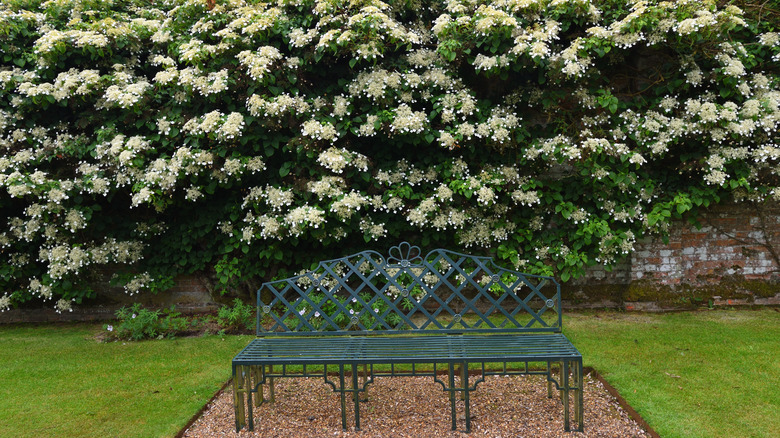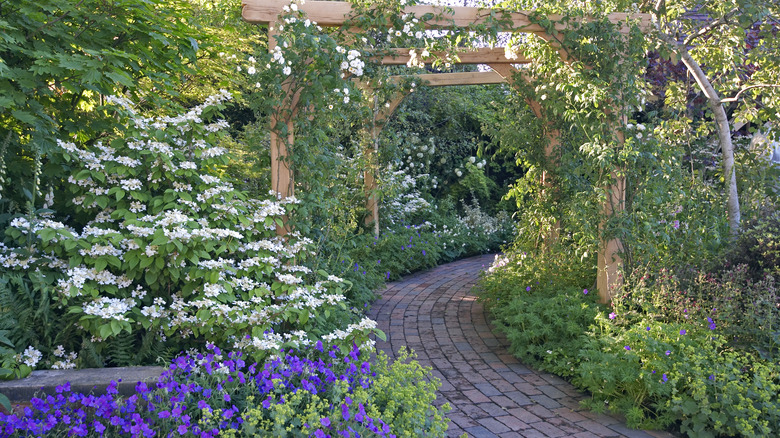Warm Up An Existing Privacy Fence With This Unique Hydrangea Variety
Owning a privacy fence comes with a multitude of benefits from marking your property line to keeping your backyard a private oasis, where you aren't bothered by the prying eyes of your neighbors. One drawback of a privacy fence, however, is its rather cold and uninspiring appearance. While it may put your neighbor's house and lawn out of sight, a solid structure like a privacy fence can block your view of the beauty of nature. Fortunately, there is a remedy. You can warm up the appearance of your fence by adding a natural element: climbing hydrangeas.
Climbing varieties of hydrangeas create the same welcoming, whimsical aesthetic as climbing roses, but without all the thorns, maintenance, threats of diseases, or insect infestations. If you've ever wondered how to bring some life to a dull privacy fence, planting a climbing variety of hydrangeas might be exactly what you need to achieve your backyard dreams.
Selecting and planting climbing hydrangea
The easiest variety of climbing hydrangea to grow is the Hydrangea anomala subspecies petiolaris. This subspecies is a hardy deciduous climber that can grow in most conditions. Evergreen varieties of climbing hydrangeas, by comparison, require warmer and more sheltered conditions. However, their ability to retain their greenery throughout the cold season might make them worth the extra work for those who struggle with the bland winter color palette.
All varieties of climbing hydrangea prefer well-draining soil that won't become soggy. The plants should be spaced about six feet apart. Purchase your seedlings from a nursery during spring or fall and plant them about a foot or two in front of your fence. Dig a hole that is deep enough to cover the plant's root ball and is three times as wide. Add compost to the soil in and around the hole before inserting your well-watered seedlings. Once planted, add mulch — being careful to leave a small gap around the plant's base — and water heavily with water containing a general-use fertilizer.
Caring for and training climbing hydrangea
While your climbing hydrangea is still small, you'll want to install wire or trellis against your fence to "train" it to climb. Eventually, it will develop aerial roots — also known as suckers — but the wire will still be needed to support the growing plant's weight. Since climbing hydrangea produces all-white flowers, adding it to your fence provides a clean, neutral backdrop that will look peaceful and sophisticated alone or accentuate other plants and flowers within your landscaping.
When your plant is young, you'll need to be especially mindful of keeping its soil moist (but not soggy). After the first few years, it will likely only need to be watered during particularly dry weather. Additional feeding beyond the initial watering is also likely to be unnecessary. When it comes to pruning, it's important to understand that each year's hydrangea blooms will appear on shoots from last year. This means that any trimming or pruning should take place right after this year's blooms become spent to prevent interfering with next year's flowering. If you've chosen an evergreen variety of climbing hydrangea, you'll need to keep an extra-thick layer of mulch over its roots year-round.


